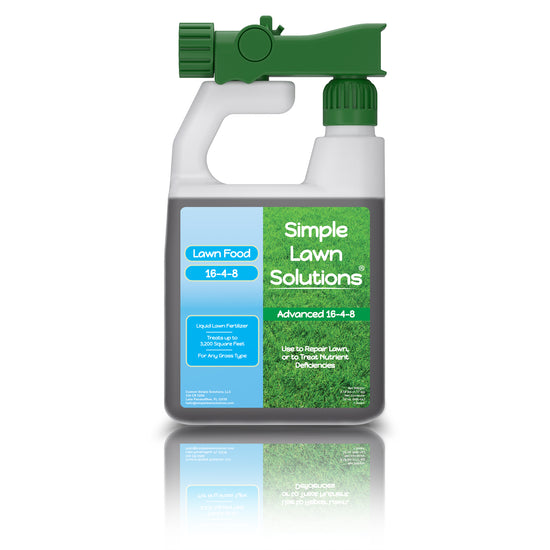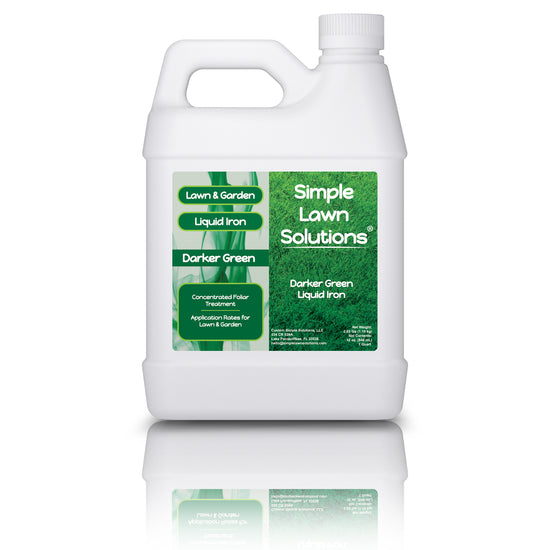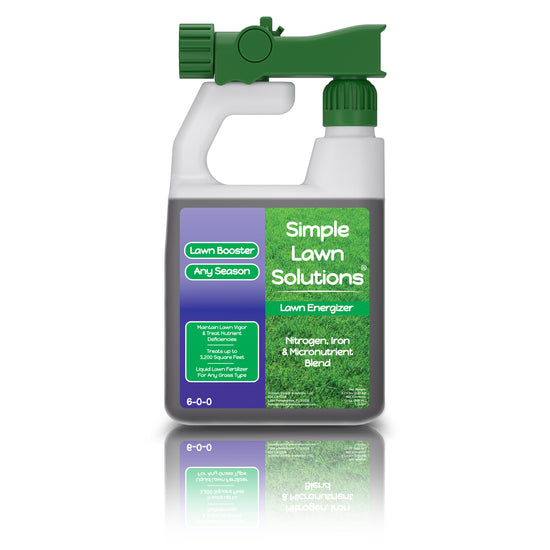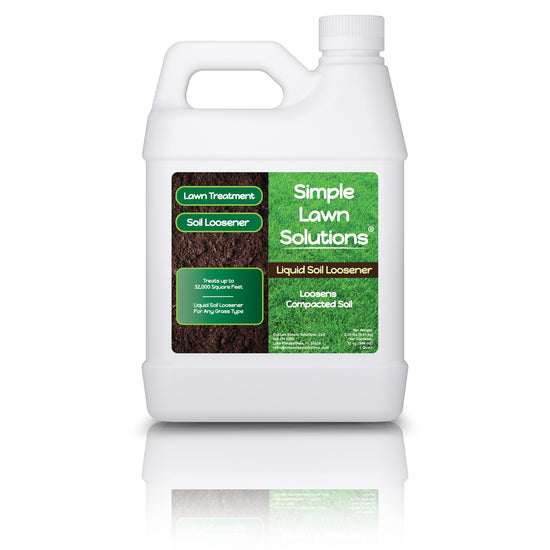The dog days of summer are typically late July through August and bring the most challenging stretch for turfgrass, especially in the Northeast and other humid, temperate regions. During this time, expect stress, slow growth, and increased vulnerability in your lawn. However, if you know what to look for and how to respond, you can ride it without long-term damage by preparing for the growing season.
Heat Stress And Dormancy
As the daylight hours and heat increase during the summer, cool-season grasses experience a stressful time frame and require detailed maintenance to ensure survival. Dormancy occurs once the grass plant enters these stressful times as a safety defense mechanism. The grass plant's growth slows dramatically and sometimes turns off its color from a deep green to a straw brown. This is a natural occurrence of the grass plant entering the high heat of summer.
What To Do When You See Heat Stress
Heat stress can occur deep in the summer, but some steps can be taken before high temperatures to help save your lawn. First, light water is applied by syringing in late morning or early afternoon to cool that canopy. This is a light mist application and not a deep watering. Second, raise the mowing height to reduce canopy exposure. Third, a penetrant surfactant and wetting agent should be applied so there are no localized dry spots (LDS), and infiltration can occur, not contribute to severe wilt. Lastly, traffic on the lawn during high-heat periods should be reduced.
Heat stress on lawns, particularly in cool-season grasses, present as wilting, color changes, leaf rolling, and thinning. It is of the utmost importance to identify heat stress quickly and apply syringing cycles, reduce mowing, and manage traffic on the lawn to preserve turf quality during hot summer months.

Preparing Your Lawn For Drought and Extreme Heat
Preparing the lawn before the onset of high heat and drought must be performed to protect your lawn against these conditions associated with high heat. Using drought and heat-tolerant cultivars, such as tall fescue and improved Bermuda grass, can prevent excess damage. Maintaining positive drainage and flow through the root zone profile and improving soil structure will allow water to move throughout the soil equally. Additionally, it is best to maintain a solid fertilization program and provide the turfgrass with precisely what it needs, as well as avoid over-fertilizing and creating a succulent plant.
Optimal Temperature and Humidity Conditions for Turfgrass Disease
Most turfgrass diseases occur when both temperature and humidity are elevated. Many pathogens prefer daytime temperatures between 75 and 90 degrees fahrenheit, and humidity levels above 90% for extended periods of 15 hours or more- significantly increasing disease risks. Continuous leaf wetness for more than 10 hours can promote fungal infection diseases. The “150 rule” states that conditions are highly conducive to disease outbreaks when the sum of the air temperature and relative humidity percentage equals or exceeds 150.
Common Turfgrass Diseases
Brown patch disease can occur at night temperatures above 68 degrees fahrenheit and high humidity. Warm-season grasses can also be affected if conditions are extreme. Pythium blight is possible when temperatures are above 86 degrees fahrenheit and night temperatures are above 68 degrees fahrenheit, which can devastate the lawn within 24 hours. Over-fertilization and mowing too low with excess moisture can also contribute to this deadly disease.

Cool-season grasses have a moderate to very high probability of forming this disease when the right conditions are present. Visual signs of Pythium include greasy spots on the leaf tissue and cottony mycelium formation on the leaf tissue. Gray leaf spot occurs when temperatures are between 70 and 95 degrees, with at least 14 hours of leaf wetness. Heavy morning dew and excessive rain storms can also favor the formation of the disease. Dollar spot favors daytime temperatures between 60 and 85 degrees F with high humidity and prolonged leaf moisture and wetness.
Best Management Strategies for Preventing Turfgrass Diseases
There are management practices that can be performed to protect against turfgrass diseases. Watering in the early morning hours before 9 am will reduce leaf wetness, and maintaining a higher mowing height during this period will go a long way in protecting the lawn during the stress. Avoid excess nitrogen applications during peak disease periods, as this will make weak and tender plant tissue more susceptible to diseases. Maintaining a positive airflow across the lawn also helps keep the leaf tissue dry, which can be accomplished by pruning trees and hedges in the lawn's landscape.

Regularly inspect the lawn for early signs of disease to implement control strategies and actions. It is always best to consider a solid disease control program by implementing a fungicide program before favorable disease conditions. Monitoring environmental conditions and adjusting mowing heights accordingly can significantly reduce disease pressures and the severity of turfgrass pathogens during the summer months.
Increased Disease Pressures
High heat, humidity, and excess moisture create a breeding ground for fungal pathogens and turfgrass diseases. Fungal diseases such as brown patch, dollar spot, and pythium blight can become detrimental if left untreated. Pythium blight is a severe disease that must be controlled within the first 24 hours to save the grass from certain death. Overwatering or evening and night watering can create perfect conditions for pathogens. Detecting these diseases takes a simple investigation of the lawn to see if there is any abnormal growth, discoloration with a distinct pattern, or a musty odor. Certain diseases can have a greasy appearance with infected leaf tissue. Spreading these diseases can occur via regular maintenance, such as mowing and other tasks that travel across the lawn surface.

Drought Stress and Localized Dry Spots
Running the irrigation system in association with rain can still cause uneven watering on compacted soils, creating localized dry spots and drought. A sure way to test the lawn is to simply step on the grass surface and see if the grass bounces back or leaves a footprint. Leaving a footprint indicates that the area is dry and wilting. Adding a light syringe cycle will assist in supplying just enough moisture to bounce back. Watering or irrigating too much during this period can be more devastating by creating optimal disease conditions.
Intense heat can affect the roots of the turfgrass plant by limiting nutrient uptake. Nitrogen applied during this time risks burning the leaf tissue and being wasted. Organic fertilization and/or slow-release fertilizers are safer for use during this time of stress. However, pausing nitrogen applications during peak heat is best unless the turf is actively growing. Weeds are most likely to occur when the turf growth is reduced or slowed. Crabgrass, spurge, and nutsedge can expand aggressively to create more competition in thinned and bare areas.
What You Should Be Doing
Watering and irrigating smartly with deep and infrequent cycles 2-3 times per week and supplying 1”-1.5” in total depth will keep the plant hydrated without too much moisture. Watering early in the morning and not at night will meet your lawn's needs. Applying wetting agents and surfactants in association with aeration and topdressing before stress will assist in moving water downward and away from the crown of the grass plant.
Avoid stressing the grass with dethatching, aerating, and overseeding. For the best results, wait until late summer or early fall to perform these cultural practices. Hold off on regular mowing and foot traffic until more favorable conditions occur. Keeping the mowing height at the higher end of the recommended ranges will protect the roots and reduce evapotranspiration.
Spot-treating fungus or insect activity and outbreaks with proper fungicides and insecticides will protect against significant damage. A preventive fungicide program is highly recommended to protect the growth and maintain turfgrass health. Don’t panic if the lawn goes dormant; this protects against additional damage. Applying seed and fertilization in late August or early September will promote success for the fall and following spring. Plan for aeration, overseeding, and fertilization once cooler nighttime temperatures are reached. Should dry spots persist or water isn’t soaking in, this is probably caused by compaction or excess thatch.
Dog Days and Defense Mode Summary
Heat and drought will slow down the growth of the turfgrass and probably result in cool-season grasses going dormant. This situation can be combated by following the deep watering and infrequent applications to equal 1”-1.5” per week. However, overwatering during this time frame should be avoided. Disease pathogens can become active and grow in fungal patches and should be spot-treated, and soil moisture wetness should be reduced. Weeds can thrive in stressed turf and should be removed manually or by spot herbicide application. Growth and color will be minimal or non-existent during the “Dog Days” of summer. Certain cultural practices, such as mowing, can cause more damage, so keeping the blades sharp and mowing less is paramount.









